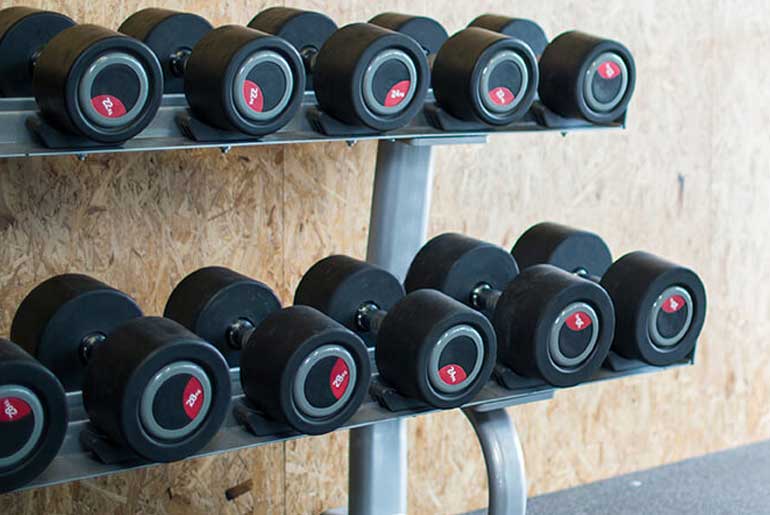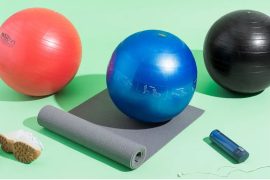If the section filled with free weights at the gym feels intimidating, especially for women who might not feel they belong there, it’s a sentiment shared by many. Some women may perceive themselves as not strong enough to lift alongside others, while others worry about potential strength-training mistakes. Acknowledging that these concerns are not solely in one’s head is important, as some gym environments may indeed make certain individuals feel unwelcome. However, if the hesitation is rooted in not knowing how to use free weights, the solution is straightforward. Seeking guidance from a fitness professional or trainer can empower individuals to overcome uncertainties, build confidence, and feel more at ease in the free weights section. Education and support play pivotal roles in creating an inclusive gym environment where everyone can benefit from strength training without hesitation or fear.
Understanding what to expect before entering the free weights section of the gym is crucial for reducing anxiety and enhancing the overall workout experience. This knowledge not only makes the gym more enjoyable but also ensures that your time spent exercising is maximally beneficial. To facilitate this, here’s an extensive guide covering everything you might need or want to know about free weights, the weight room, and how to confidently navigate this space. From basic etiquette and equipment usage to different types of exercises and the potential benefits, having a comprehensive understanding can empower individuals to make a grand entrance into the weight room, fostering a positive and effective fitness journey.
Free weights:
Free weights refer to any training load that isn’t attached to another apparatus or piece of gym equipment. The term “free” implies that these weights can be picked up, moved, and manipulated freely, with the only opposing force being gravity acting on the object. The two primary types of free weights commonly found in gyms are dumbbells and barbells, but the category extends to include other items like kettlebells, medicine balls, sandbags, and even tires. The versatility of free weights allows individuals to perform a wide range of exercises, engaging multiple muscle groups and promoting functional strength.
In contrast to fixed weight machines, cable machines, and resistance bands, where the load moves in limited directions, free weights offer a more dynamic and unrestricted range of motion. The resistance in free weights is solely provided by the force of gravity acting on the weight. On the other hand, in non-free-weight apparatuses like cable machines and resistance bands, the source of resistance is the cable or band itself, introducing a different dynamic to the workout. Understanding these distinctions helps individuals choose the most suitable equipment for their fitness goals and preferences.
Lifting free weights:
Lifting free weights offers numerous advantages due to the unrestricted nature of movement they provide. Unlike weights attached to machines, free weights allow for a broader range of exercises with endless possibilities. Consider a squat as an example. When performed with a leg press or Smith machine, the movement is fixed, and there’s no concern about wobbling. However, executing the same squat with free weights introduces the need for stabilization, engaging muscles to prevent wobbling and allowing the body to move in a less restricted path.
This freedom in movement mimics real-life activities, contributing to functional strength. The engagement of a variety of muscles during free weight exercises also leads to more comprehensive training, promoting overall strength and reducing the risk of muscle imbalances and injuries. Additionally, the tactile experience of lifting a weight off the floor can evoke a sense of empowerment, making the workout not just physically beneficial but emotionally rewarding. Overcoming the challenge of something new and successfully lifting a substantial weight can create a powerful and satisfying experience.
Navigating the free weights section at the gym can be a rewarding experience for those looking to build strength and sculpt their physique. Here’s your ultimate guide to confidently and effectively navigate the free weights area:
Set Clear Fitness Goals:
- Clearly define your fitness goals, whether it’s building muscle, increasing strength, improving endurance, or a combination of these.
- Your goals will guide your workout routine and exercise selection.
Determine Workout Frequency and Duration:
- Decide how many days per week you can commit to free-weight training.
- Aim for a workout duration of 45 to 60 minutes, allowing enough time for warm-up, exercises, and cooldown.
Warm-Up Thoroughly:
- Prioritize a dynamic warm-up to increase blood flow, elevate heart rate, and prepare your muscles and joints for the workout.
- Include light cardio, dynamic stretches, and activation exercises for major muscle groups.
Understand Equipment:
- Familiarize yourself with the various free-weight equipment available, such as dumbbells, barbells, benches, and racks.
- Learn how to adjust equipment to your body size and comfort.
Master Proper Form:
- Before adding significant weight, focus on mastering the correct form for fundamental exercises like squats, deadlifts, bench presses, and rows.
- Seek guidance from a fitness professional or use reputable online resources to ensure proper technique.
Begin with Compound Movements:
- Start your workout with compound exercises that engage multiple muscle groups, such as squats, deadlifts, and overhead presses.
- Compound movements are efficient for overall strength development.
Progress Gradually:
- Start with lighter weights to focus on form and prevent injuries.
- Gradually increase the weight as you become more proficient and your strength improves.
Incorporate Variety:
- Keep your routine diverse by incorporating a variety of exercises and movements.
- Target different muscle groups and use different equipment to avoid plateaus and monotony.
Prioritize Safety:
- If lifting heavy weights, especially with barbells, ensure you understand and use proper spotting techniques.
- Familiarize yourself with safety features, such as safety bars on squat racks.
Stay Hydrated and Listen to Your Body:
- Drink water consistently throughout your workout to stay hydrated.
- Pay attention to your body; if you experience pain beyond regular muscle fatigue, reevaluate your form and consider adjusting the weight.
Practice Gym Etiquette:
- Re-rack weights after use and maintain a clean and organized workout space.
- Allow others to work in if the gym is busy, and be courteous to fellow gym-goers.
Cooldown and Stretch:
- Finish your session with a cooldown, including static stretches for major muscle groups.
- Stretching helps improve flexibility and reduce muscle tightness.
By following this comprehensive guide, you’ll not only navigate the free weights section with confidence but also optimize your workout for maximum results. Consistency, proper technique, and a commitment to your fitness goals will lead to success in the gym.
Disclaimer:
The information contained in this article is for educational and informational purposes only and is not intended as a health advice. We would ask you to consult a qualified professional or medical expert to gain additional knowledge before you choose to consume any product or perform any exercise.








